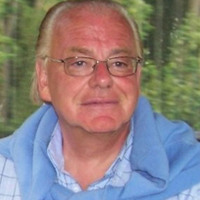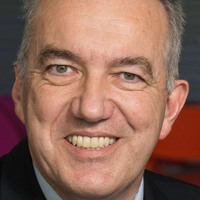Article published 22 January 2024

’We need an SSbD framework that is attractive for the SMEs’ -Interview with Philippe Jacques and Marcel Meeus from EMIRI
Hello Philippe Jacques, Managing Director at EMIRI, and Marcel Meeus, Managing Director at Sustesco BV and Senior Technical Advisor EMIRI. Tell us about EMIRI!

Marcel Meeus from EMIRI
Marcel Meeus: - Since 2012, EMIRI – the Energy Materials Industrial Research Initiative – represents about 60 organizations, from industry, research and associations, active in Advanced Materials Technologies for clean and sustainable energy & mobility.
EMIRI elaborated a technology roadmap in 2019 to reflect the current market situation, identify research gaps and establish key R&D priorities in the field of advanced materials for clean energy production and mobility.
EMIRI has been instrumental in setting up BATT4EU, the European Partnership under Horizon Europe on Batteries. EMIRI has also been very active in initiating the AMI 2030 Initiative developing safe and sustainable advanced materials and related technologies. One objective of this initiative is to set up a new transversal European Partnership under Horizon Europe on advanced materials.
What is the energy value chain focusing on currently?

Philippe Jacques from EMIRI
Philippe Jacques: - In the commission work programme for 2024, 18 priorities are stated: one of these is “Advanced materials for industrial leadership”, so that is very good news and shows that it is on the top of the agenda on commission level. The commission also announced that they want to develop a coordinated plan with the member states on advanced materials; the partnership will be one important piece in this plan, and there is a lot of coordination to be built with the member states.
Marcel Meeus: - Within IRISS we developed three value chain segments: batteries, solar energy and wind energy. We have a good understanding of European players in these value chains.
Considering recycling and second life, how far is the technology developed for these three value chains?
Marcel Meeus: - Recycling is well developed for batteries, less for solar and wind energy. Second life is really relevant in batteries because the batteries still have 80 % of their capacity at end of life in the vehicle, so there is still lot of capacity that can be recovered. There are many ongoing initiatives for reusing these batteries in grid storage or in home storage. For solar and wind there is much less ongoing.
What is the biggest challenge in your value chain when it comes to implementing SSbD?
Marcel Meeus: - When it comes to batteries, the biggest challenges are different at the different levels. On the molecular level, it is about minimizing the use of critical raw materials by using different materials or decreasing their content in the compositions. Another big topic is securing access to raw materials from resource-rich countries outside the EU based on sustainable sourcing of raw materials. Europe needs to have an answer to that, first by striving sustainable sourcing of these raw materials in those countries. Additionally, we try to exploit new resources in Europe and there are initiatives in Finland and Portugal on nickel, cobalt and lithium for example.
The best is to increase recycling and reuse the materials. The new EU battery regulation has mandatory targets of recycling materials in new batteries. We are also working on advanced materials, and we try to develop the best materials with the best efficiency in the upcoming battery generations.
At product design level, there are two options: design to performance and design to cost. Design to performance is about making the best materials possible, improving energy density, cycle life etc. Design to cost is focusing on developing cheaper materials and technologies, improving social acceptance of e-mobility by developing lower cost technologies.
At process design level it’s all about decreasing CO2 by using renewable energy, decreasing waste, etc. The target at process level we have in Batteries Europe is to come to a 12-24 kg CO2 per kilowatt hour. That can be compared to 60-100 kg in China.
Philippe Jacques: - The anticipated restricted use of PFAS is also directly touching the battery systems.
Marcel Meeus: - Safety is a key word in battery road mapping. There are lots of standardisation bodies that provide all the needed standards for safety. What is missing in the battery world is social lifecycle assessments, social LCA is insufficiently developed.
Looking into solar energy, Crystalline silicon-based technologies dominate the world market share with about 95% of the total production. Europe is quite strong in their advanced materials, novel technology cell and module production, as well as manufacturing equipment, but is lacking capacity in silicon cell and module manufacturing. China has become the major manufacturing country for solar cells and modules, followed by Taiwan. I believe that there are more chances for Europe in thin film technologies and especially in multi-junction technologies and for the higher energy efficiencies.
When it comes to wind energy, the critical SSbD issues are critical raw materials used in permanent magnets; trying to find a solution at same performance, and geopolitical aspects. Blades composite materials recycling is still an issue, as well as performance and lifetime of the turbines. EMIRI has made two case-studies for the JRC; one focusing on improved recyclability of wind turbine blades, and one looking into lithium-ion batteries and using solid electrolyte instead of liquid electrolytes.
Philippe Jacques: - We need all sources of renewable energy to be deployed. The off-shore wind is probably the solution that is the best accepted from a social point of view and there is more wind in a steady state off-shore than on-shore. Materials are however suffering much more in this more aggressive environment. It’s always about the trade-offs between the solutions and social acceptance.
How can IRISS be of value to the energy value chain?
Marcel Meeus: -IRISS can help by establishing a structure for a permanent international network of experts, as well as an SSbD ecosystem that is supportive for the uptake and utilization of Safe-by-Design and Sustainable-by-Design strategies by the industry, especially small and medium-sized enterprises. Establishing criteria and guiding principles for SSbD development driven by the application of life cycle thinking in materials and product design is also something that IRISS could help with.
Philippe Jacques: - I would like to see some support and guiding about the trade-offs. In the end, it will always be about trade-offs. If IRISS could provide some tools or some common framework or approach on how to balance the different dimensions, that would be very welcomed.
How can companies start working with SSbD?
Marcel Meeus: - IRISS can offer trainings and organise workshops to include companies and SMEs specifically. We try to promote SSbD in all our EU projects and through our professional organisations.
Philippe Jacques: - What is also important is to make sure that the trainings can be implemented by SMEs. This approach (SSbD) requires a lot of effort, so we need to come up with a practical framework that is accessible, digestible and attractive for SMEs. We still need to work with the commission on the incentives and IRISS has a role to play in this.

